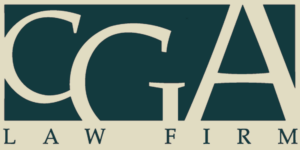*DISCLAIMER: This article is intended to share factual information and is not intended to reflect the author’s or CGA Law Firm’s stance or opinion on Student Loan Relief. This information is not intended to be a substitute for professional legal advice and does not create an attorney-client relationship. You should only accept legal advice from a licensed attorney with whom you have an attorney-client relationship.
Biden’s Student Loan Forgiveness Plan
On Wednesday, August 24, 2022, President Biden announced another step in his student loan forgiveness plan wherein qualified borrowers will see $10,000 to $20,000 in student loan debt cancellation. Whether a borrower qualifies for relief depends on income reflected on the borrower’s tax return, and what type of loan was taken initially. Most borrowers making less than $125,000 per year, or less than $250,000 for married couples filing together, will qualify for $10,000 of forgiveness, with Pell Grant recipients qualifying for up to $20,000.
Married borrowers may see larger benefits from student loan relief programs and repayment plans if they file tax returns separately from their spouses. Speaking with an attorney and an accountant is important to determine how to maximize savings when deciding whether to file taxes jointly or separately when one or both spouses has student loan debt.
Navigating Available Debt Relief Programs
Eligible borrowers for whom the Education Department already has income information on file may see automatic forgiveness in 2023 without the need to apply for relief. Other borrowers will need to complete the application process. The professionals at CGA Law Firm are ready to assist you and your loved ones in navigating student loan (and other debt) relief, under this and other available relief programs.
Impact on the Economy
Whether you are in support of or against this student loan relief program, the following discussion is intended to address some common concerns and provide factual information as to the program’s anticipated impact on the economy:
- “Student loan forgiveness primarily benefits the wealthy.” False. The Education Department estimates that nearly 90% of affected borrowers earn less than $75,000.00 per year. Ivy League graduates, or those traditionally seen as the wealthier part of the student loan borrower population, represent less than 1% of Federal student loan borrowers nationwide.
In fact, those who are actually eligible for debt relief are disproportionately young and Black. According to the Institute on Assets and Social Policy, twenty years after first enrolling in school, the typical Black borrower who started college in the 1995-96 school year still owed a whopping 95% of their original student debt.
This program primarily benefits low- and middle-income, working-class families, providing an opportunity to lower expenses, increase savings, and in return, positively boost the economy. About 60 percent of borrowers have received Pell Grants, and the majority of Pell Grant recipients come from families making less than $30,000 a year – these families represent 27 million borrowers.
However, the extra spending power of borrowers has raised concerns about inflation – but are those concerns legitimate? Keep reading.
- “Student loan forgiveness will significantly increase inflation rates.” False. A preliminary analysis done by Goldman Sachs estimates that as a result of the latest round of student loan forgiveness, student loan payments will fall to 0.3% of borrowers’ personal income. Before the program, student loan payments previously represented 0.4% of borrowers’ personal income – meaning the change to each individual borrower’s bottom line of only 0.1% will not be enough to significantly increase inflation as a result.
To put the 0.1% into perspective, as of July of 2022, as measured by the consumer price index, inflation was at 8.5%, a nearly 40-year high. It is estimated that the student loan forgiveness program may drive inflation up, but only by 0.1 to 0.3 points according to economists at Wells Fargo, Bloomberg, and other leading sources.
An additional factor to consider when it comes to inflation is that at the end of this year, the COVID-19 pause on student loan payments expires, and borrowers will resume monthly payments on their remaining debt, which payments will offset (in a positive way) the already minuscule impact on inflation.
- “Student loan forgiveness will have an impact on taxes.” Partially True, Partially False. Because there is no way to know exactly how many student loan borrowers will apply and be approved for the program, there is in turn no way to calculate how much the program will cost taxpayers ultimately. However, the cost is estimated to be $300-400 billion. That being said, the total federal student loan debt is approximately $1.7 trillion according to recent data (a huge jump from the $250 billion outstanding federal student loan debt in 2004), which is already costing both borrower and non-borrower taxpayers something, long before this program is being put into place. But how much is student loan debt costing the average taxpayer?
Based on the high estimate of $395 billion, the National Taxpayers Union Foundation estimates an average burden of $2,000-2,500 in taxes per taxpayer once this round of student loan relief goes live. This is a number taken in a vacuum without considering a multitude of factors, including how much of that debt was unlikely to ever be repaid by borrowers in the first place. According to experts, 1 in 5 borrowers defaulted even before the 2020 pandemic, meaning ultimately, defaulting student loan borrowers was costing taxpayers long before this relief plan.
As for borrowers’ concerns over tax liability on forgiven debt, according to the American Rescue Plan of 2021 as well as the fact sheet provided by the White House, this debt relief will not be treated as Federally taxable income. However, borrowers may owe State taxes as a result of the program depending on where they live.
- “Student loan forgiveness is unfair to those who worked hard to pay their debts in full.” False. While “fairness” is subjective, objective data is important to consider in this situation. According to www.nces.ed.gov, average tuition, room, and board has increased substantially over the last few decades, while the increase in household income has not grown nearly as rapidly. Not only is tuition higher for current student loan borrowers, but interest continues to increase. The current federal interest rate is 2.25-2.5%, but www.studentaid.gov states that the interest rate on Federal student loans for undergraduate students’ debt is 4.99%, and for graduate or professional students the interest rate is much higher at 6.54%. Considering the burden of the current high interest rates on education loans, students are unable to ever pay enough to even chip away at the original principal balance.
Even borrowers who never stopped making payments end up with larger balances than when they initially started. According to a report from the National Consumer Law Center and the Center for Responsible Lending, in 2021, 2 out of every 3 student loan borrowers who made voluntary payments during the COVID-19 payment pause ended up owing a larger balance than they originally did. Additionally, the $10,000 relief will only pay about 26% of borrowers’ loans in full – the remaining 74% of borrowers will still be carrying and paying on student loans indefinitely.
It’s safe to assume most graduates are also working hard to pay their bills, but today’s economy is unforgiving and does not leave much room for error. According to economists, the benefits of this relief program far outweigh any other potential effect. Without some relief, this generation of students will perpetually find it hard to purchase homes, put food on the table, have children, find reliable transportation, put away money for retirement, start small businesses, and take other steps beneficial to boosting our economy.
In conclusion, the CGA Law Firm is here for you to provide guidance, answer your questions, and address your concerns about student loans and other debt relief. Please do not hesitate to contact us today.

E. Haley Rohrbaugh
Attorney
Haley Rohrbaugh is an attorney with CGA Law Firm with extensive years of legal experience in both Florida and Pennsylvania. She joined the Bankruptcy Law Group at CGA in 2010, where her primary focus is in Chapter 13, Chapter 11, and Chapter 7 Bankruptcy, though she also assists clients in business formation and representation, and estate law.
Read Haley’s Bio Page in full HERE.

